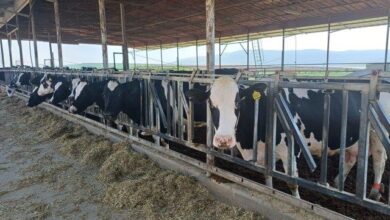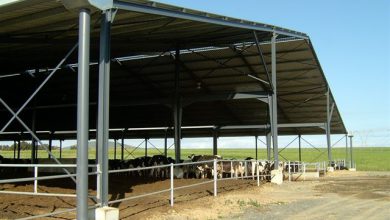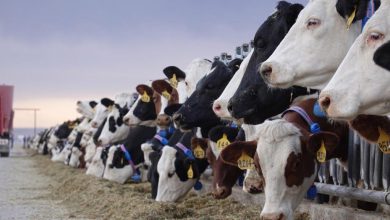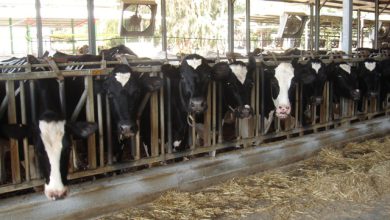Introduction.
The Precision Livestock Farming (PLF) laboratory at the Institute for Agricultural Engineering which operates within the Agricultural Research Organisation (ARO, the Volcani Centre) is cooperating with other institutions, e.g., the Faculty of Agriculture in Rechovot, Ramat Hanadiv (a research sheepfold), and with the departments of engineering at Tel University, Ben Gurion University and Haifa University in varied aspects of research of ‘Clever Systems’ and their application in Livestock rearing. In the PLF laboratory there are today 15 laboratory workers, three project-leaders, post-docs, PhD students, research assistants, etc. Today, there are eight on-going projects at the laboratory, having to do with research on different aspects of livestock production and animal welfare – in the cow-shed, at the barn or at the hen-roost. The laboratory’s main grant source is European funds (HORIZON 2020), the Israeli Milk Council and the Chief Scientist of the
Israeli Ministry of Agriculture.
2) Experiments in Sheep and goats (SR=small ruminants).
The group consists of five members: BSc Assaf Godo, a systemssystem engineer who is running therunning the SR project ;project;
At the laboratory, Dr. Tzach Glasser, who initiated the SR project and accompanies it from Ramat Hanadiv;Prof. Ilan Halachmi, who is the head of the laboratory and Yossi Lepar and Efrat Wilensky (PhD student) who are in charge
of analyzing the big data aiming at developing the algorithmicsthe algorithmics. Our algorithms are developed for early detection of stress or onset of illness of the animalss.
The commercial affair aspects are daily taken care of by Eitan Metuki and Udi Ram of the ‘Spark Foodtech Company’. A short description of the project by Yossi Lepar :
“The project has started three years ago. The installation constructed at the PLFthe PLF lab at Bet Dagan is aimed at monitoring themonitoring the growth rate of each individual lamb and for the identification of diseases. The specific installation (shown in the photographs attached to this article) is constructed in an open space close to the barn where the lambs are being reared For fattening. a lamb voluntarily climbs to the device which is built on a weighing scale.
The new device reads several parameters :
The lamb’s weight, the amount of water intake by the lamb, the drinking behavior of the lamb. etc. Every lamb has on one of his ears an RFID ( Radio Frequency Identity) tag, analyzing the data, thus allowing the identification of the abnormal growth rate or altered drinking behavior, indicating the onset of disease or development of stress at the individual level. For example, if lameness occurs a lamb most probably will have a lower visiting frequency and a higher water intake per a visit. This phenomenon allows the early detection of disease when the treatment is most effective and before spreading of the infection to other animals. Early detection and efficient treatment reduce the use of antibiotics and since lameness is painful, early detection also increases animal welfare.
In general, in real time when the algorithm identifies a change in the lamb’s drinking behavior or body weight, it will generate an alarm which means the animal may need an individual care. These individual animals will be automatically
marked by a special color. Optimal marketing time can be marked automatically by another color. This decision is based on predefined market demand threshold (60Kg) or the device detects the daily weight gain, not justifying the feed cost of living.
Another asset of the device is the automatic weighing of the lambs along the growing period. Today,
Growers weigh the lambs approximately once in a month, a practice which is time consuming and a stressful situation to the lambs and for the labor who are involved in the actual procedure..
The lambs mount the device on average five times a day.
The described experiment advances towards a commercial stage. The design criteria includes an affordable price.
At the moment, we are open to commercial partners who might be interested in a mass production of the device described in this article and the relevant company’s marketing capacity in the SR field.
To summarize, following laboratory tests, the group wishes to examine in the field the possibility of implementing The newly developed device for the early detection of illness and individual stress of animals, Figure 4.Animal growth. Each line represents an individual lamb, it can be seen that some lambs grow rather fast and can be directed for next generation breeding purposes. Others, grow slower – and may need individual care.





